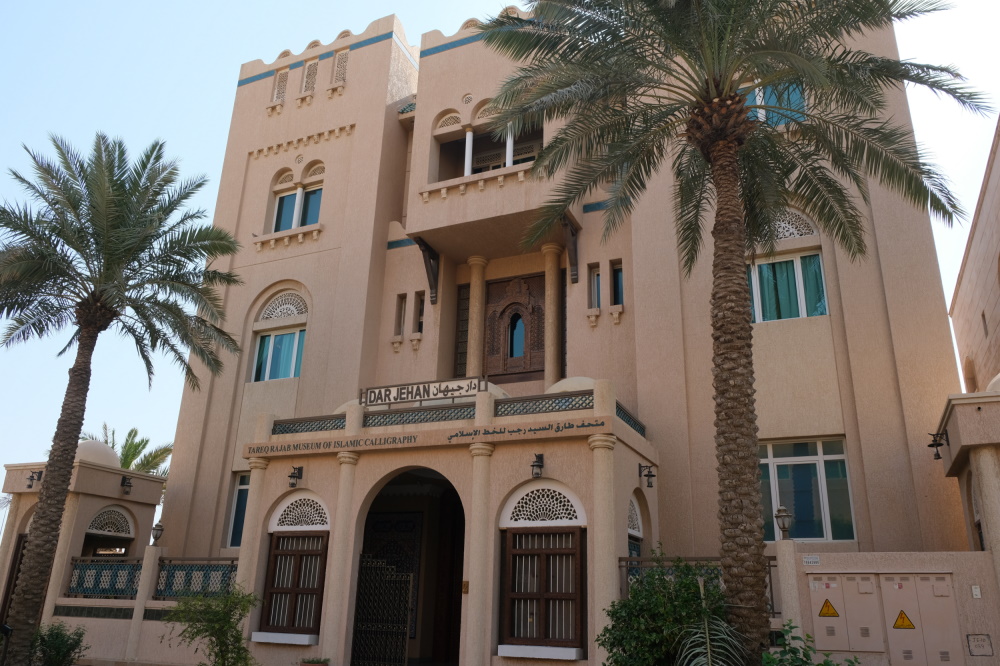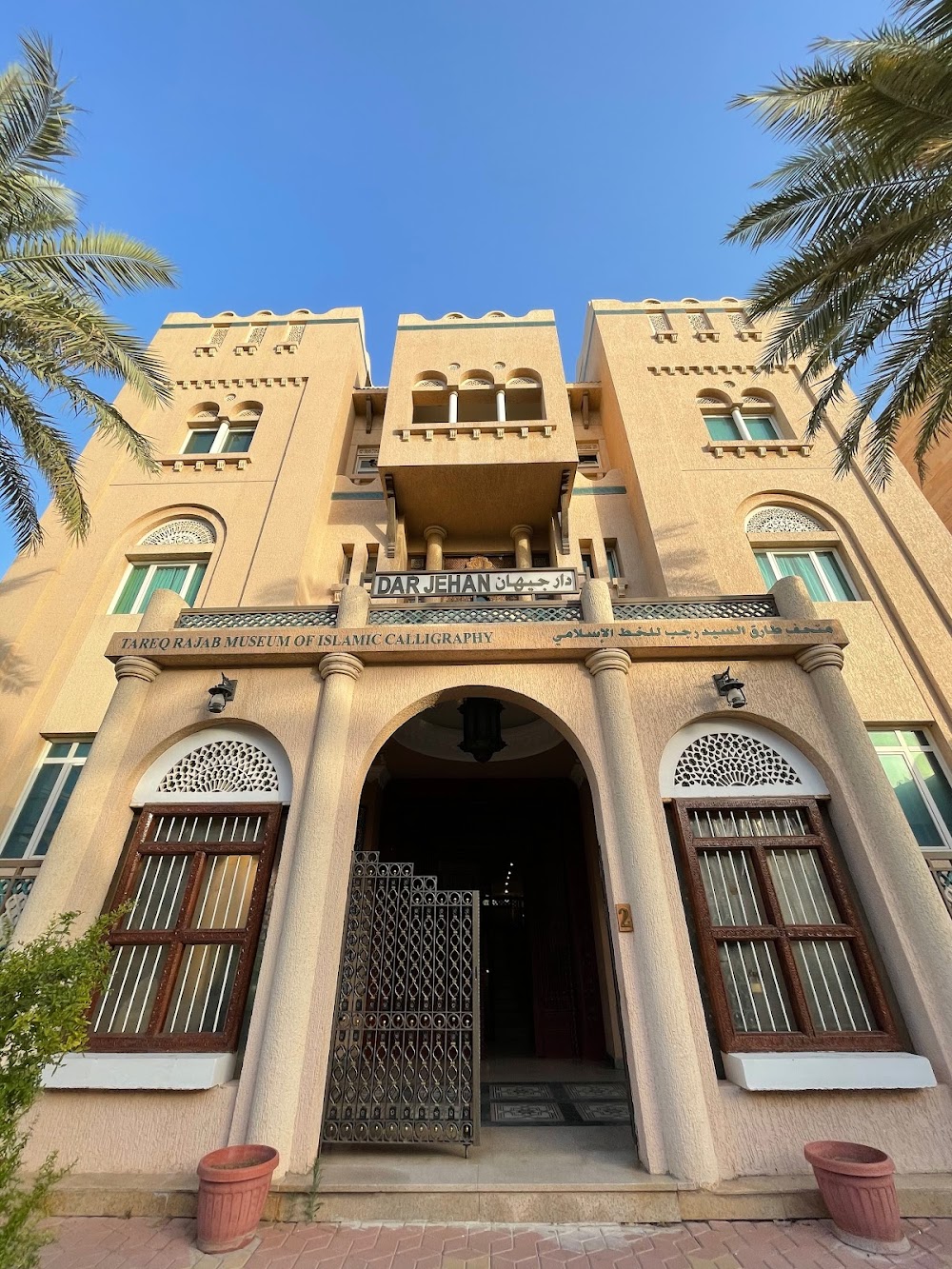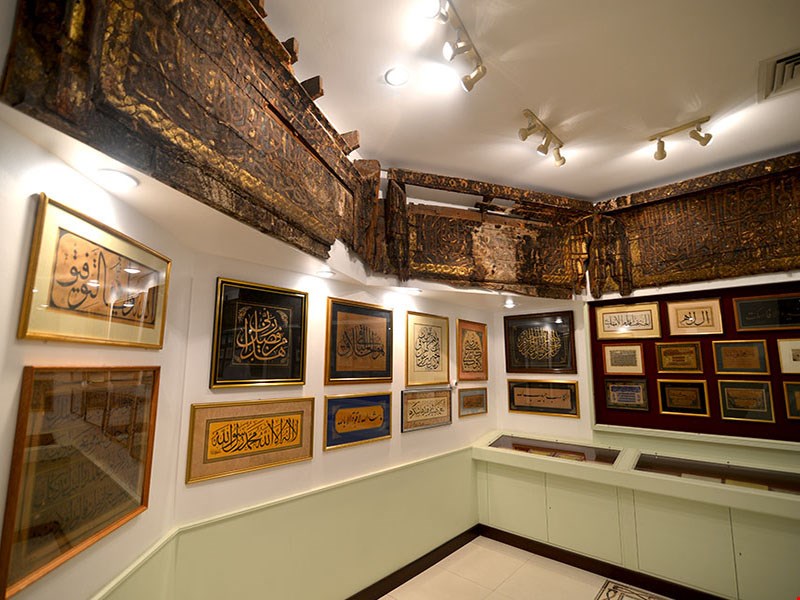Tareq Rajab Museum (متحف طارق رجب)
Overview
The Tareq Rajab Museum of Islamic Calligraphy, nestled in the heart of Kuwait City, is a remarkable tribute to the intricate art of calligraphy within the Islamic world. This museum is home to a vast collection of artworks and artifacts that chronicle the evolution of Islamic calligraphy, showcasing its journey from ancient origins to its contemporary forms.
The museum's story begins with its founders, Tareq Sayed Rajab and his wife, Jehan Wellborne Rajab. Their adventure into the world of Islamic art started in the 1950s and spanned over fifty years of passionate collecting. Their extensive collection grew to such significance that they decided to share their treasures with the public, leading to the establishment of the museum, which officially opened its doors in 1980.
Located in a beautifully designed villa in the Jabriya area of Kuwait City, the museum's architecture reflects traditional Islamic aesthetics, creating an inviting atmosphere that enhances the viewing experience. As you enter, you are immediately transported into a world where art and history converge.
The museum's collection is thoughtfully divided into various sections, each highlighting different facets of Islamic calligraphy. The first section features ancient Qur'anic manuscripts, showcasing the evolution of script styles such as Kufic, Naskh, and Thuluth. These manuscripts not only illustrate the spiritual devotion of Islamic scribes but also their artistic mastery.
Another compelling area of the museum is dedicated to calligraphic tools and materials. Here, visitors can admire the delicate reed pens, known as 'qalam', in various shapes and sizes that have been used by calligraphers throughout history. The display also includes inks, papers, and binding techniques, offering a comprehensive understanding of the craftsmanship essential to creating exquisite calligraphy.
The museum goes beyond manuscripts and tools, showcasing calligraphy across diverse mediums. Visitors will find intricately adorned ceramics, textiles, metalworks, and architectural elements, each piece reflecting the seamless integration of calligraphy into daily life and Islamic decorative arts.
Education and scholarly research are central to the museum's mission. It regularly hosts workshops, lectures, and exhibitions featuring contemporary calligraphers and their works. This commitment bridges the historical significance of calligraphy with its modern interpretations, encouraging a deeper appreciation for this timeless art form.
One of the museum's standout features is its interactive calligraphy sessions. Visitors can try their hand at writing Arabic script under the guidance of skilled calligraphers, providing a hands-on experience that not only engages participants but also helps to keep the ancient tradition of calligraphy vibrant in today's world.
Over the years, the Tareq Rajab Museum has evolved into more than just a collection of artifacts; it is now a vibrant cultural hub that honors and preserves the rich heritage of Islamic calligraphy. The meticulous curation of its collection ensures that future generations can explore and learn from this profound artistic tradition.
The museum's influence extends far beyond Kuwait, drawing scholars, art enthusiasts, and tourists from around the globe. Its dedication to showcasing the depths of Islamic calligraphy establishes it as a significant cultural institution in the global art community.
In summary, the Tareq Rajab Museum of Islamic Calligraphy serves as a beacon of cultural preservation, celebrating the art that has flourished throughout Islamic history. Thanks to the vision and passion of Tareq and Jehan Rajab, the museum stands as a cherished space where the beauty of the written word is eternally honored.






